Baja California might reasonably be accused of having a slightly mis-leading name. It’s not actually California at all. In fact, it’s not even part of the USA. It’s the 1,500km long, thin sticky-out bit of land dangling down the Pacific side of ‘mainland’ Mexico. We explored its beaches, kayaked the coastline, drove some remote 4×4 trails, ate too many fish tacos and discovered the new nation-state of the USG. And it turned out to be whale-shark season, so we went for a swim with them too!

Baja Crossing
The term ‘mainland’ Mexico is a bit of a pants-on-fire expression, implying that Baja is an island. You can, without leaving the country, drive from central Mexico up around the top and back down into Baja, but it’s a loooong way. Instead we take a trucking ferry from Topolobampo (cool name!) to get from the ‘mainland’ to La Paz in southern Baja. It’s a basic transporter ship where the long-haul drivers sleep in their truck-cabs on the overnight crossing. We have the comfort of Cuthbert and the friendly chaps kindly position us on the outside/upper deck so we have a sea-breeze and great view from our window for the crossing. ‘Brucie-bonus’ (as we Brits say 😊).
Baja… Nice?
Many wax-lyrical about Baja’s amazing beaches, fabulous sea-coves, awesome remote off-road trails and delicious fish-tacos. It sounds an idyllic overlanding location for an expedition truck like Cuthbert with a Boaty McBoatface inflatable kayak on-board. Others are more measured in their description of Baja “it’s nice… with nice beaches… nice scenery… nice drives… nice food”.
So what did we find? Well… for a meaningless generalisation we’d say: “it’s great” (interpretive note: ‘great’ sits higher than ‘nice’, but lower than ‘awesome’ on the scale of Baja objectivity 😊). For a more insightful comment it’s worth breaking the areas down: beaches, mountains, oceans and towns.
Baja Beach Life
In Baja you can’t go far in any direction before stumbling on a decent beach. Both coasts are a string of sandy bays, rocky headlands and tiny off-shore islands. We had been looking forward to kayaking here and we weren’t disappointed – we did lots of paddling around lots of bays in our inflatable Boaty McBoatface.
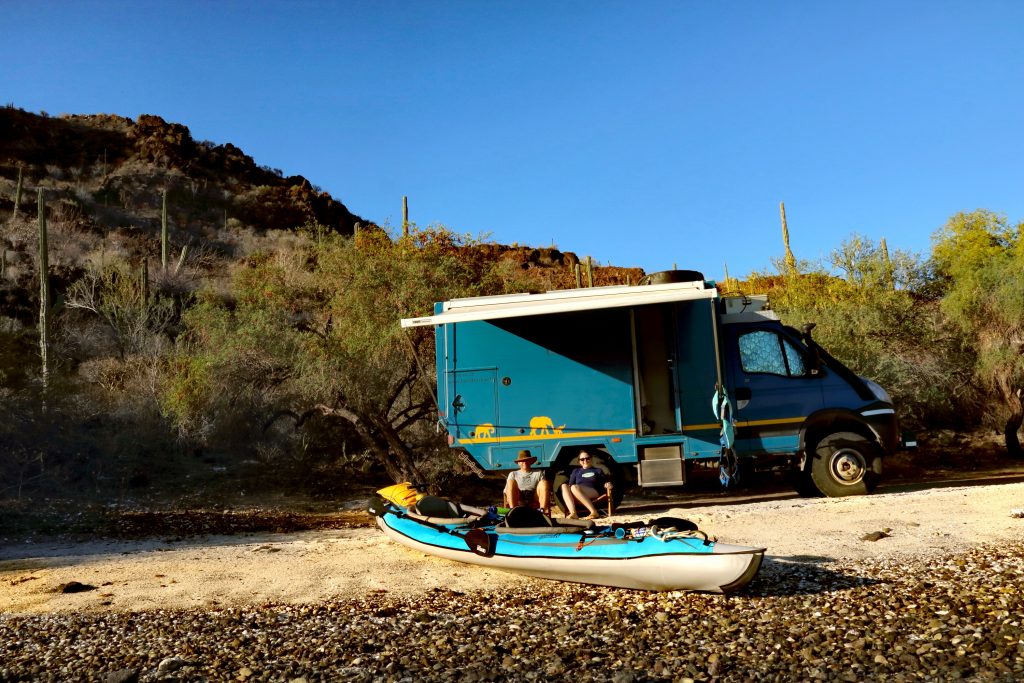
Team Tucks’ Truck 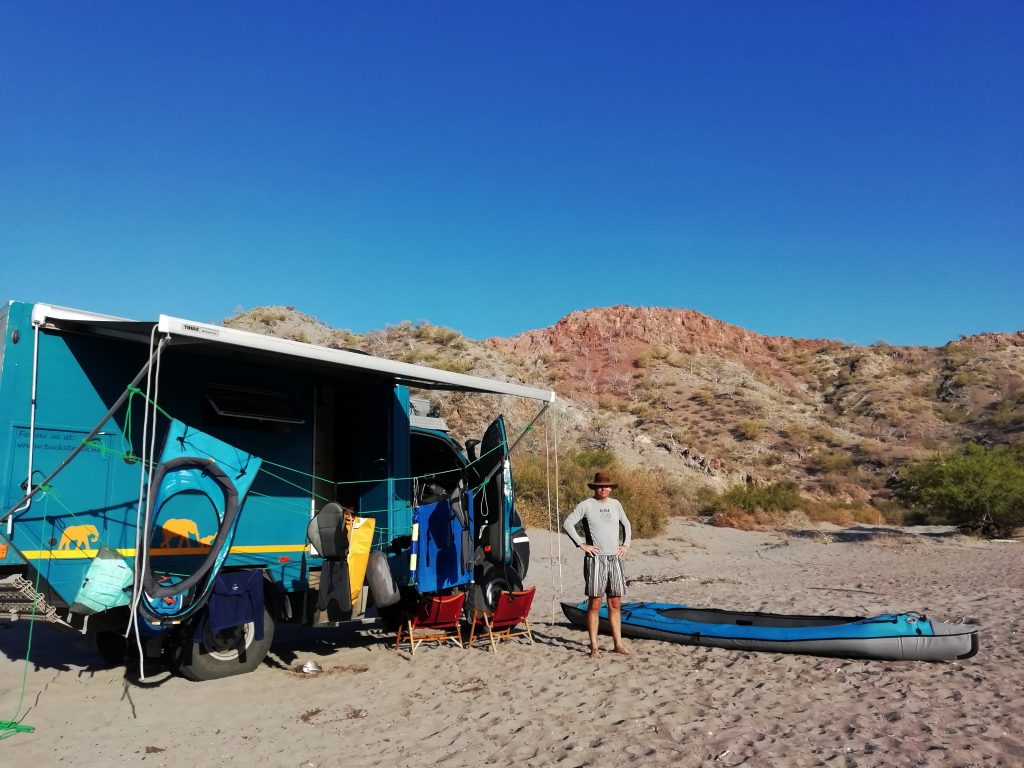
Drying-out Boaty McBoatface 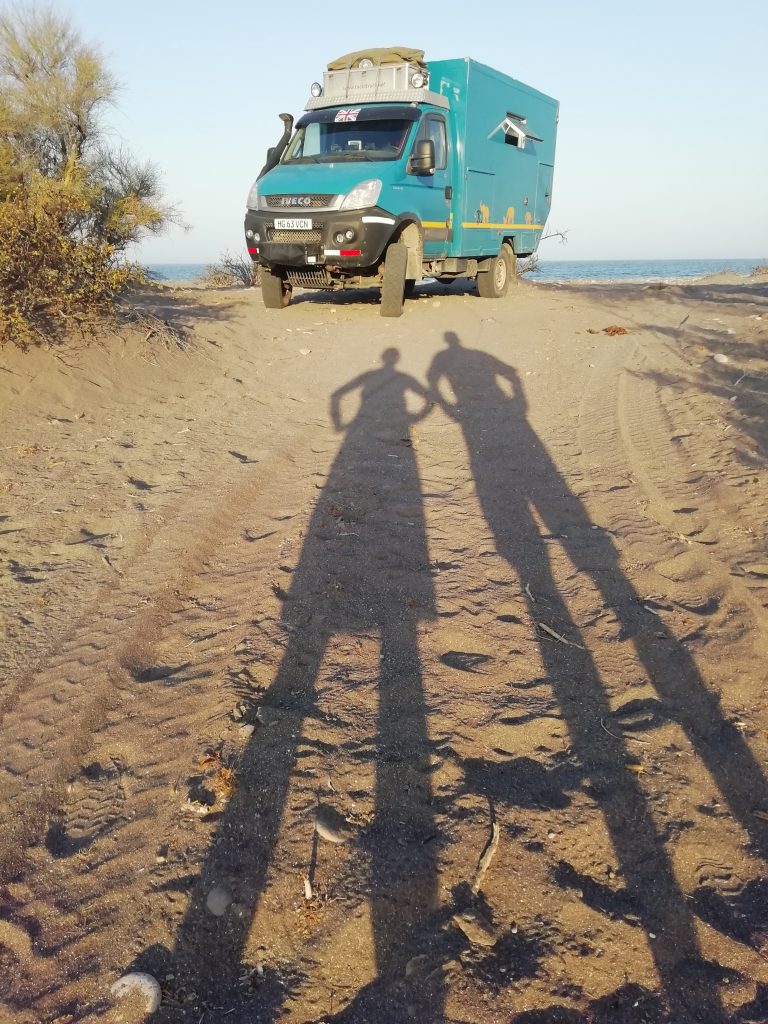
Long shadows 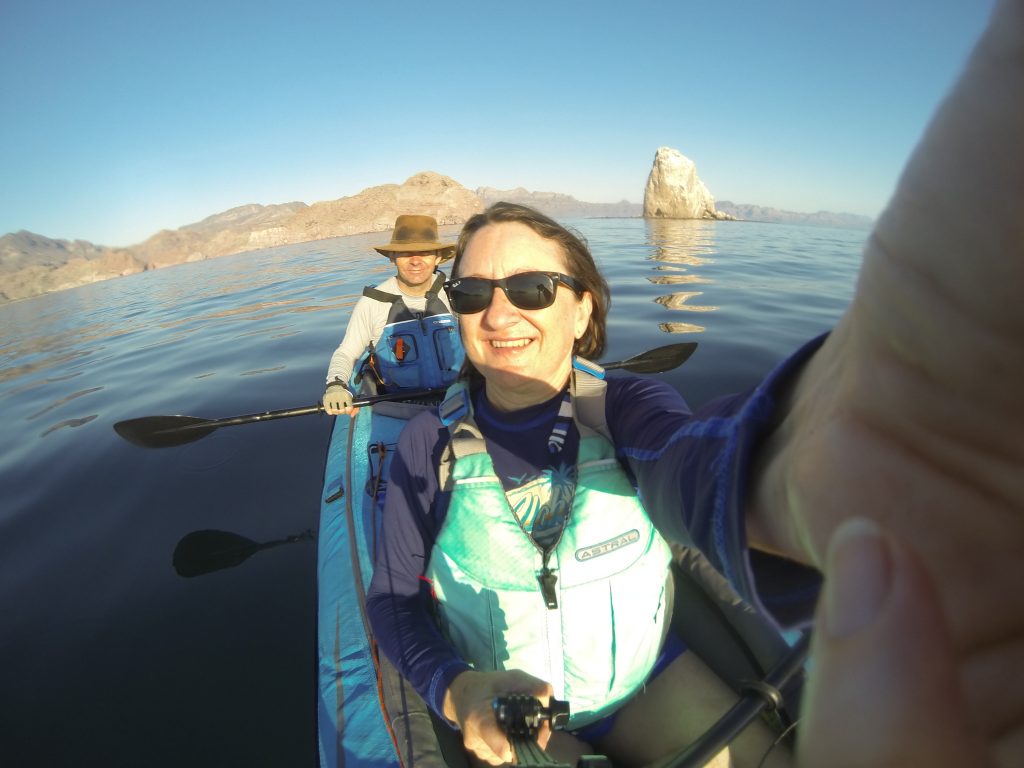
baja california kayaking
Sometimes beaches are highly accessible by car, just 100m off a main highway (in which case, even in the off-season, they’re well-used). But our favourite beach spots were down challenging, 4×4, off-road trails. This is where you might indulge us while we have a little brag about the fabulous Cuthbert 😊. Land Rovers and other small, high-clearance 4x4s will, for sure, reach these stunning, remote, hard-to-access spots. But few camper-trucks with all domestic comforts would make it down the heavily rutted tracks, up the steep rough-rocky lanes, or through the deep, soft sand. We reduce his tyre pressures, engage one or more of his three diff-locks, even engage low-range gear if we need to… and Cuthbert barely flinches! He glides over it all like a dream. He’s a little star and allows us to live the hashtag #homeiswhereyouparkit. Brag over.
Mountain Baja
So yeah… the beaches are great. What else? Nobody talks much about inland Baja and we hadn’t really anticipated mountains. We went on tracks over 1,000 metres (3,000ft) in central Baja – who knew, eh? It was sometimes rough-going, but there was some stunning scenery and the occasional friendly goat-farmer waving as we rumbled by. Hidden in the Baja high-ground we found ancient rock-art (around 10,000 years old!) in caves, deep canyons, turquoise rockfaces, Jesuit Missions, oasis rivers, and many, many cacti. So many cacti. If ever there were a Cactuslandia… this is it. All types, shapes and sizes. More cacti than you can shake a spikey stick at.
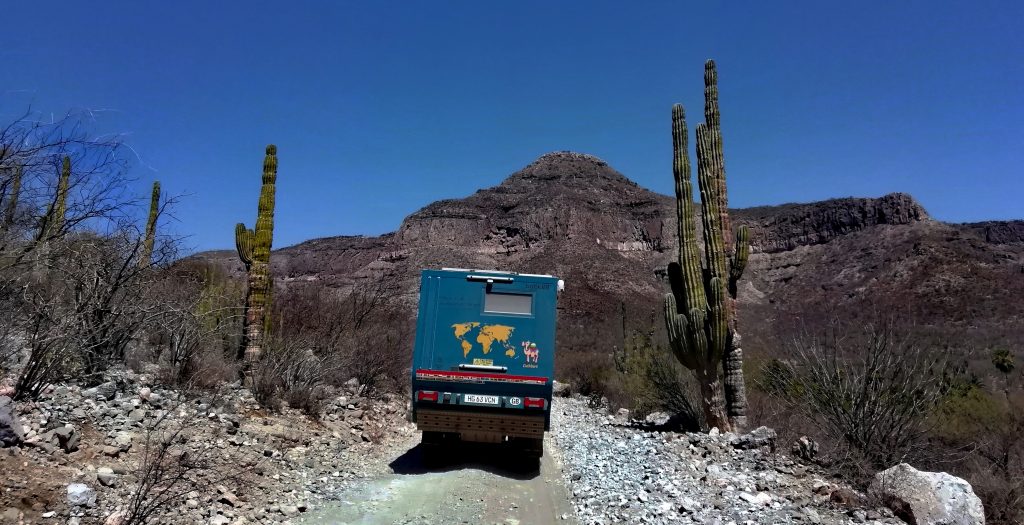
Baja California – not all about beaches! 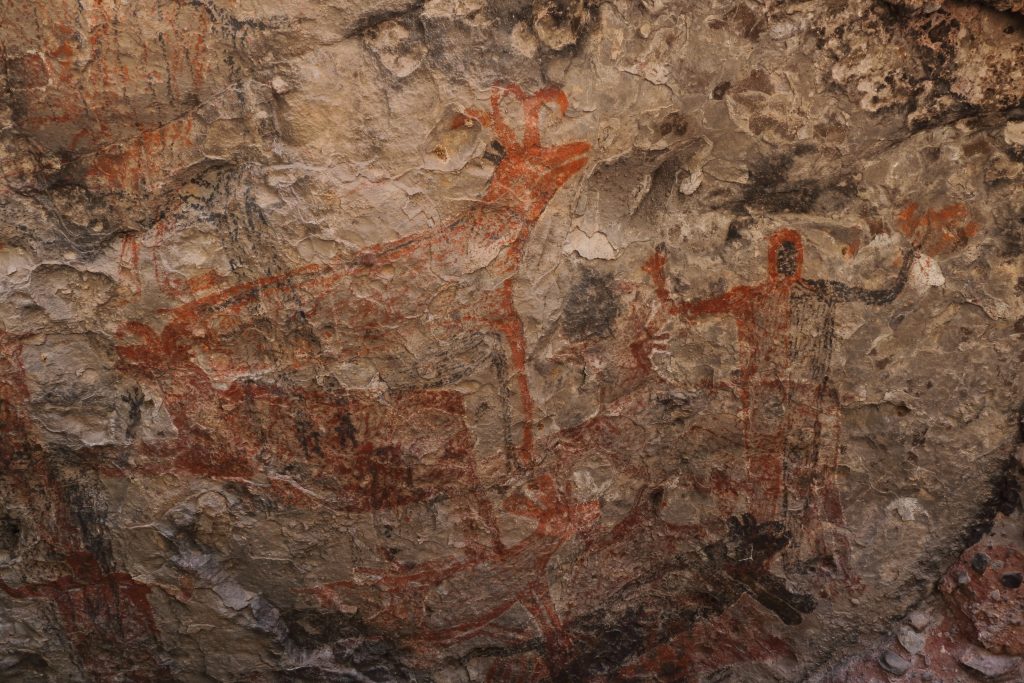
Rock art 10,000 years old 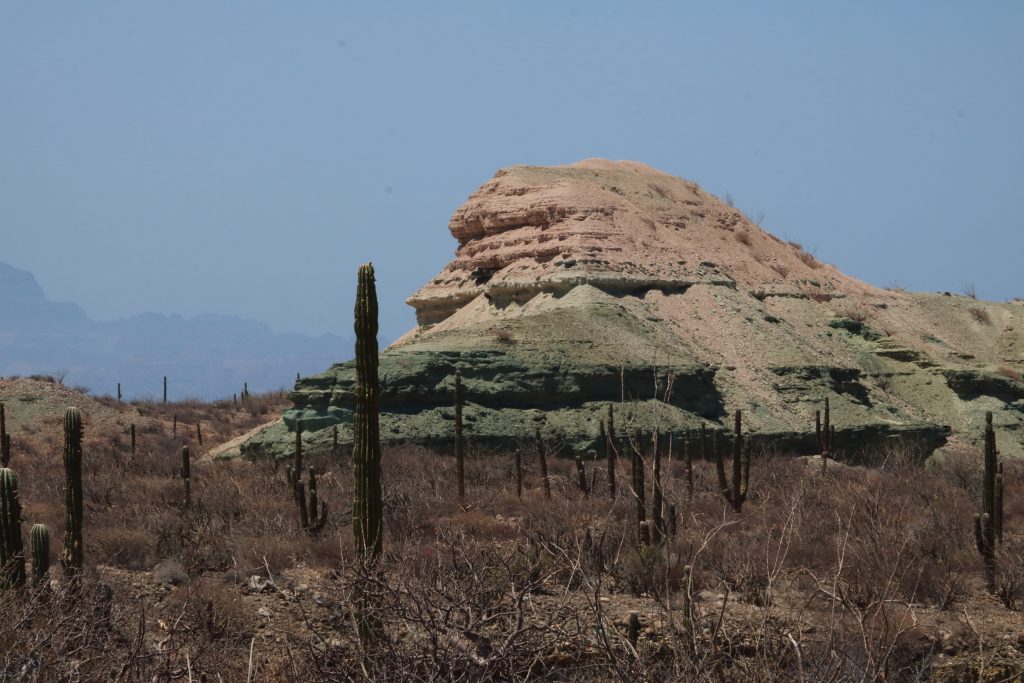
Baja California – not all about beaches! 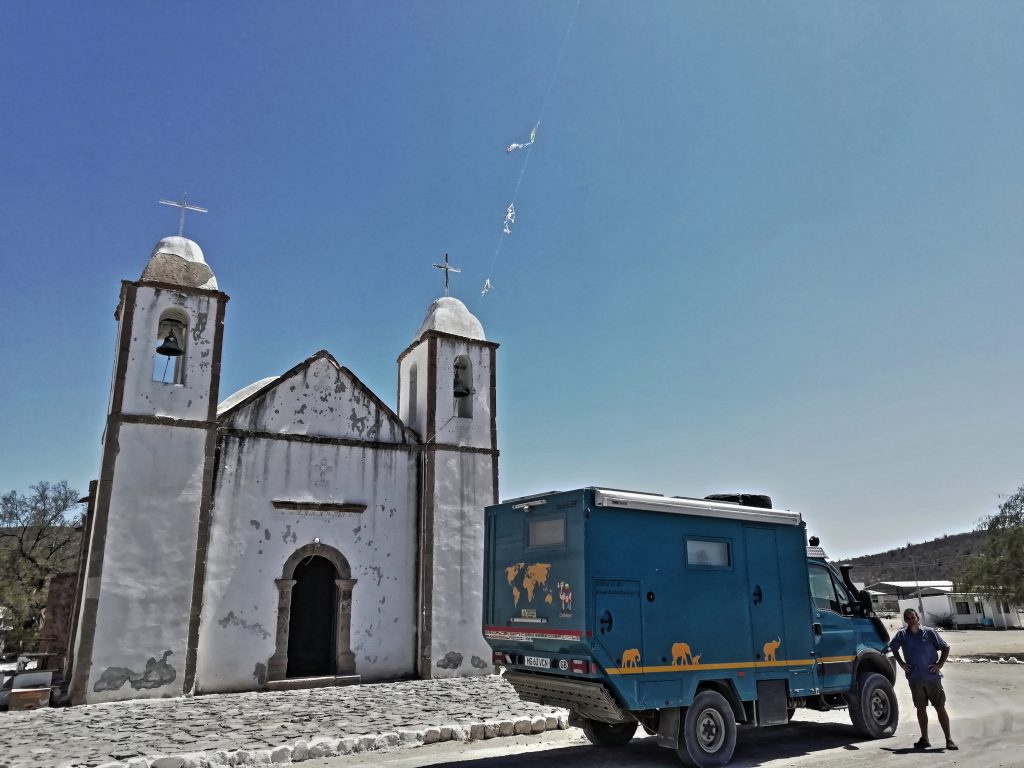
Jesuit Mission San Luis Gonzaga
Whale-Sharks Baja
We’ve been lucky enough to see some amazing nature on our overlanding travels so far: gorillas in Rwanda, penguins in Antarctica, turtles in Galapagos, rhinos in Botswana, jaguars in Brazil, dugongs in Belize (the list goes on… ). In Baja we add another gob-smacking experience to the list… swimming with whale-sharks!! No meticulously planning here… it’s just sheer jammy luck that we happen to be in the Sea of Cortez at the same time as these guys’ summer migration. We hired local guide Jose to take us out to find some. Not only did we get lucky with Sharky, but also seals, turtles and manta rays too!
First, the fact thing: a whale-shark is not a whale. Technically it’s a shark, but it’s the size of a whale. For nutrition, it just sucks-in plankton, krill and the smallest fish. Jose assures us that: a) it doesn’t have any teeth for chewing; and b) it has only a tiny throat, far too small to swallow anything the size of a human. Fine. We’re about to get in the water with sharks up to 10 m long and weighing around 18,700 kg!!! But they can’t eat or swallow us. So that’s okay then.
Despite their humongous size, whale-sharks are surprisingly tricky to see in the (admittedly rather murky) water. Luckily, from an elevated position on the boat, Jose has a hawks-eye for spotting the dark shadows in the water. Here’s how the operation goes once Jose spots Sharky: (i) we prepare ourselves with mask, snorkel and long fins; (ii) we hang precariously over the side of the boat; (iii) Jose skilfully positions the boat close enough to Sharky that we’ll (hopefully) see him underwater, but not so close that Sharky will be alarmed by the engine; (iv) on Jose’s command we launch ourselves into the water and fin frantically in the direction he tells us.
At first we see nothing in the murk. Then… appearing suddenly out of nowhere, immediately in front of my face is the unmistakable beauty of Sharky’s white-spot skin pattern. He’s swimming slowly across from left to right and is less than arm’s length away. I watched his dorsal fin glide gently past in front of my eyes, then his tail… and with one flick, he was gone. Oh Sharky! I never even saw your face! Back in the boat, Jose gave us a tactical briefing. We should try to position ourselves in the water so that as Sharky comes past us, we can swim alongside next to him.
On the next go, the same boat-drill… but this time, Sharky’s enormous face swam up from the deep, straight at me, taking over the whole ocean space in front of me!! My heart was thumping… “no teeth… he’s big… but no teeth…”. I saw his huge mouth open slightly, then he passed just under me… quite slowly, but so close that he would have hit me if I hadn’t pulled back a bit. I waited a few seconds until he was half-way past me, then started finning as fast as I could alongside him as Jose had instructed. Marcus did the same on the other side. Sharky swam gently for a while, he seemed to be toying with us… playfully lulling us into the illusion that we could even hope to stay with him. Ha ha… fools!! Even with long fins, it was exhausting. As we tired of keeping up with him, he descended a few feet, away into the murk.
We found and swam with several different Sharkys on the trip. Each time was an extraordinary, heart-thumping experience. What an exceptional privilege to have seen these magnificent, graceful and exquisitely beautiful giants at close quarters, in their natural environment. These special memories will stay with us long after the overlanding journey has ended. (Note: we couldn’t upload the video of the whale-shark swimming, but below are links to the Instagram snippet-clips that we posted)
Gringo Baja
The negative parts of Baja were for us, the pockets popular with Gringo snowbirds. Some have winter homes here, but many drive down in huge (and I mean huuuge) motorhomes, gathering for ‘the season’ in sprawling RV parks. We’re not even here at snowbird time, but their seasonal presence still leaves a strong impression. English is widely spoken; menus have American-style food; fuel stations and restaurants have prices in US$. You get the picture.
This influx of Gringo snowbirds isn’t, of course, unique to Baja. Guanajuato, for example, and other cutesie towns in central Mexico, have a similar influx. But a key difference is that these had a strong pre-Gringo culture – vibrant populations and bustling economic communities in architecturally historic towns into which the Gringos could mingle (‘mingle’ being a more accurate term here than ‘integrate’, I think). Pre-Gringo Baja on the other hand, had just a series of tiny, self-sufficient, fishing-hut communities.
Baja’s towns have therefore developed over the last 30-40 years to be Gringo-dominated. They might even be mistaken to have made a unilateral declaration of independence from Mexico, forming an autonomous, sovereign nation of The USG (United States of Gringoland). But hey… Baja’s a big place… there’s room for all. Mexicans are very reasonably profiting from the situation, so who are we to criticise? In Europe, our fellow British countrymen have demonstrated advanced skills in the art of culture-destruction by snow-birding to certain parts of Spain. Live and let live.
Leaving Baja
We dashed to Baja under a ‘hastily adjusted’ Mexico plan, to see it before the hurricane season kicks in. Our ‘Plan A’ on arriving in southern Baja was to drive half-way up, then get another ferry back to the mainland to continue our tour of central/northern Mexico. But oh…. why bother planning? Half-way up Baja we felt the draw of ‘Plan B’: more great kayaking. So we continued north to the very top, where we’re just 50km south of Trump’s Wall. The USA will (hopefully) be our country number 46 when we eventually get there, but first we’re driving all the way back down the mainland to see what we missed. It’s a looong way, but we’re in no hurry to leave marvellous Mexico…
Baja Videos!!!
Links to a few short-snippet videos that we put on Instagram… Swimming with whale-sharks, Cuthbert rescuing the fishermen, Dawn Kayaking in Baja.
Baja Photo Gallery

Jesuit Mission San Luis Gonzaga 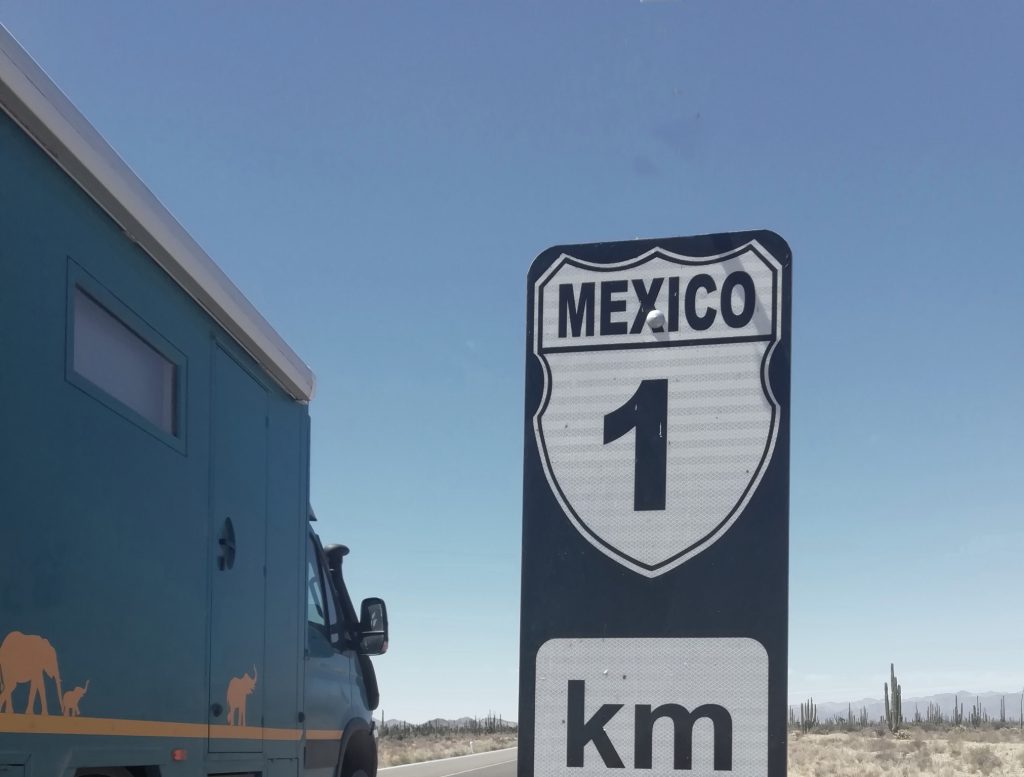
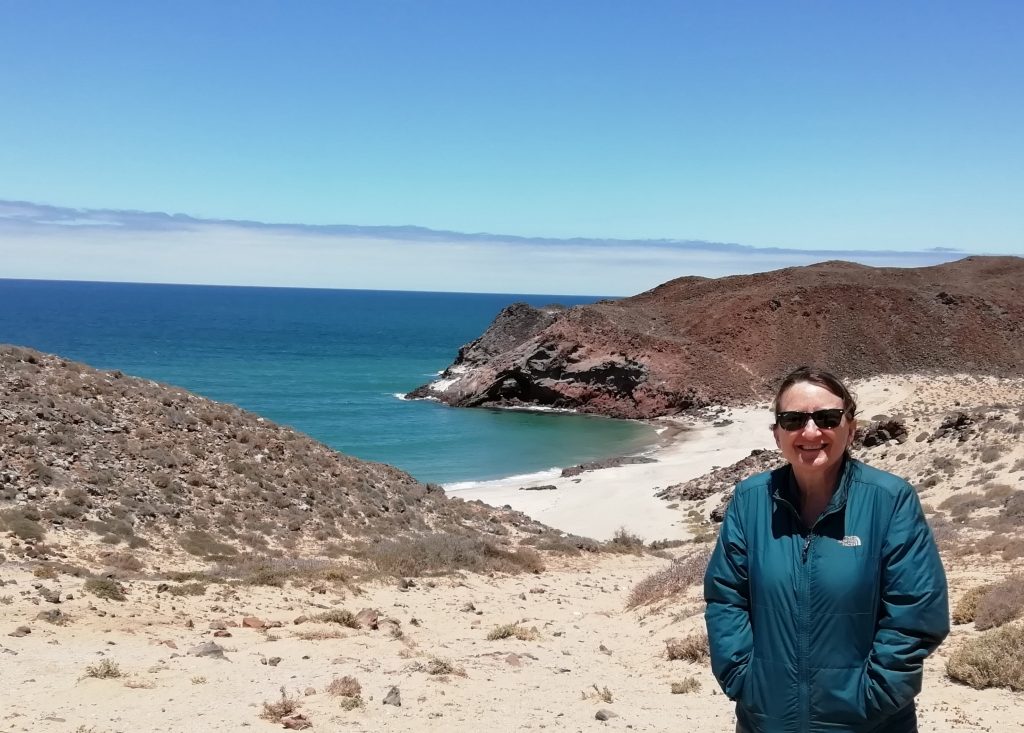
It wasn’t always hot in Baja! 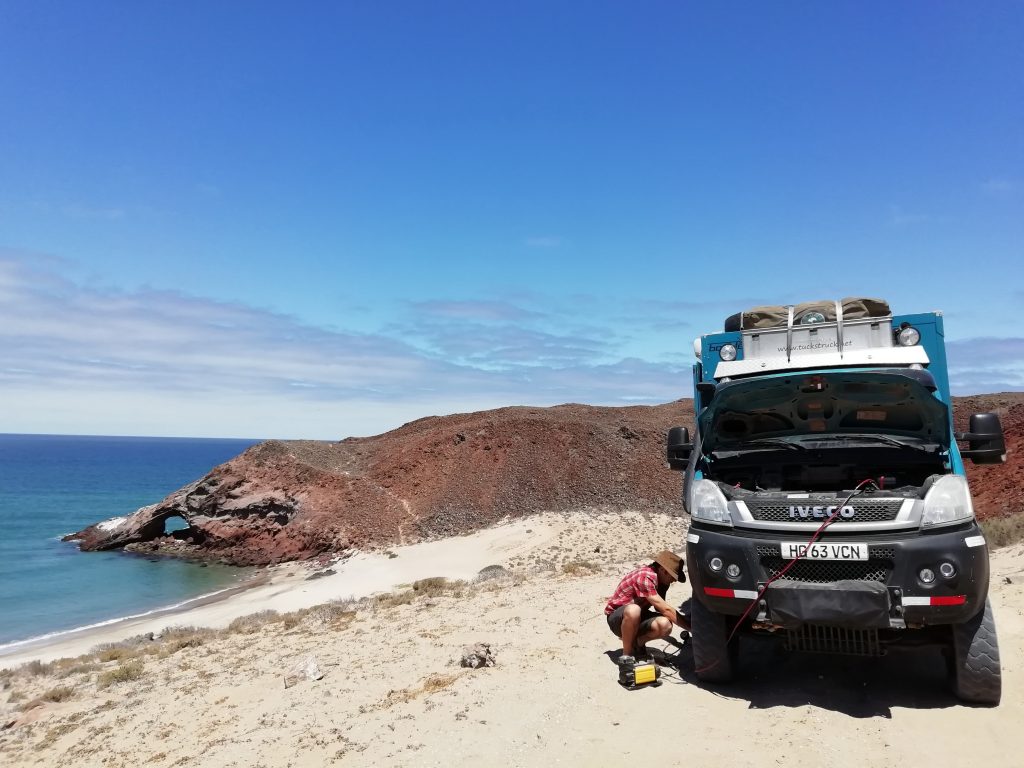
Airing-up after sand-driving 
Team Tucks’ Truck 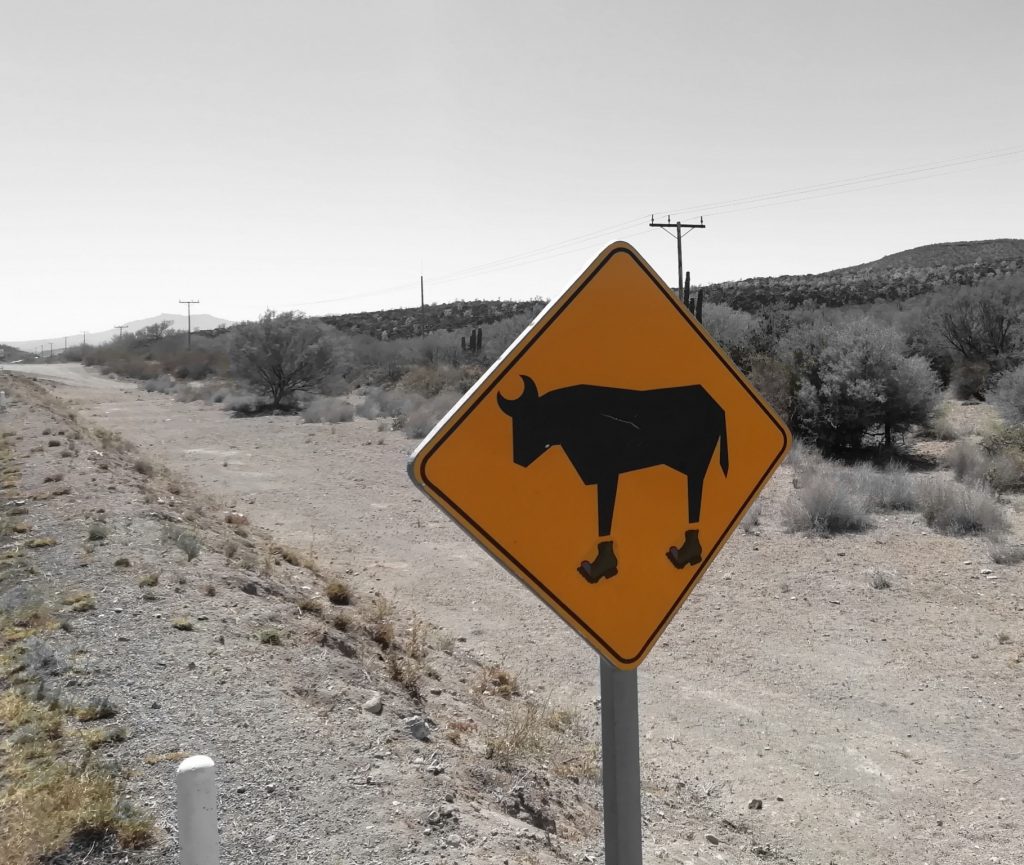
Cows with boots in Baja 🙂 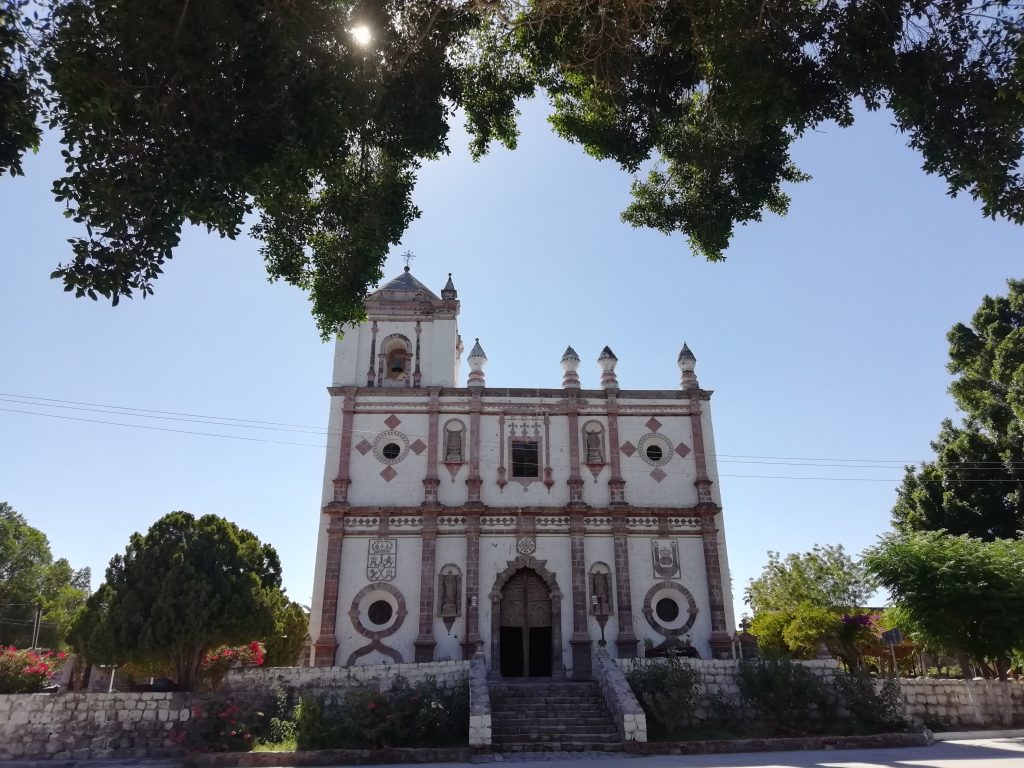
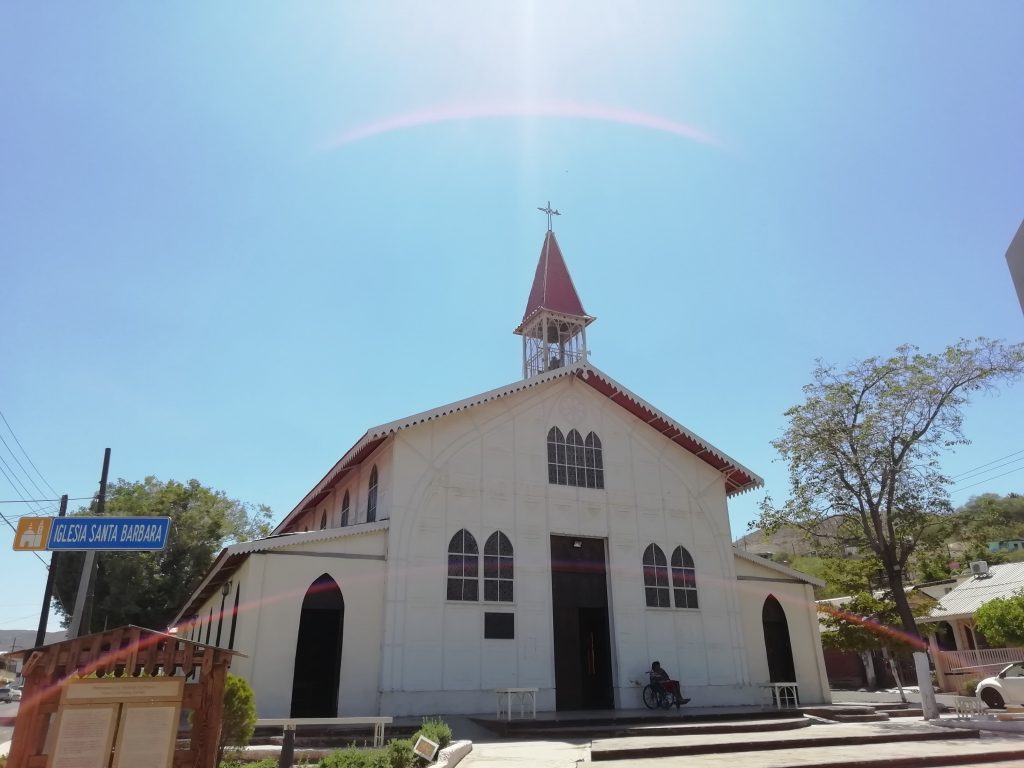
Eifel’s church in Santa Rosalia 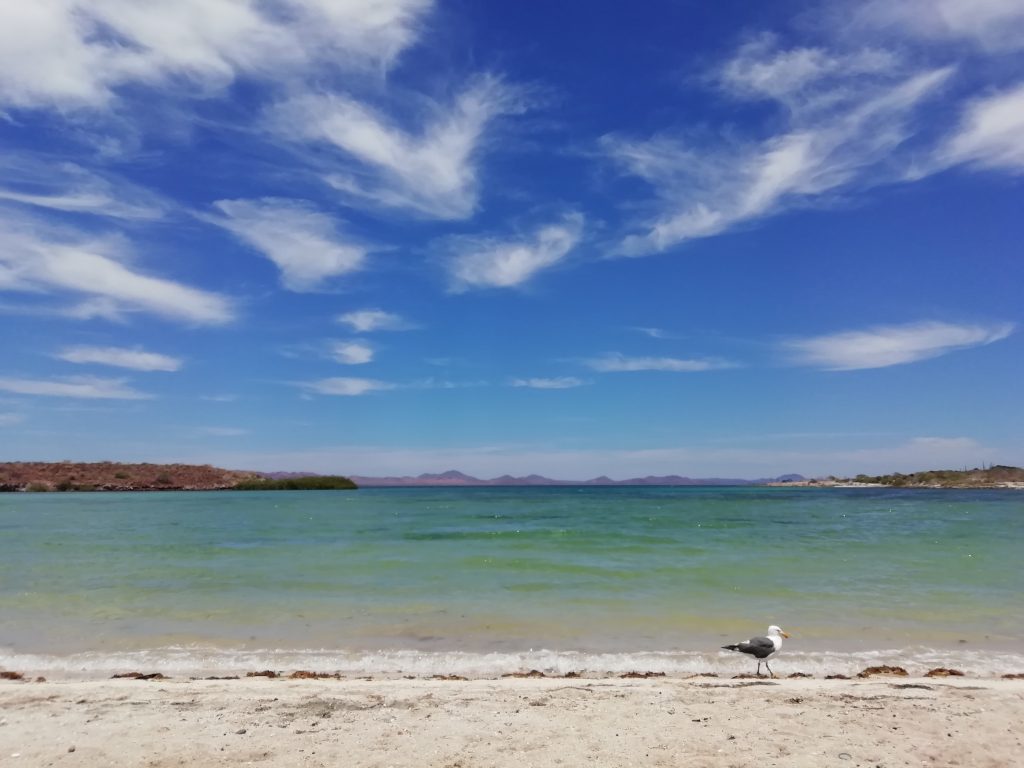
Beachlife 
Drying-out Boaty McBoatface 
Baja California – not all about beaches! 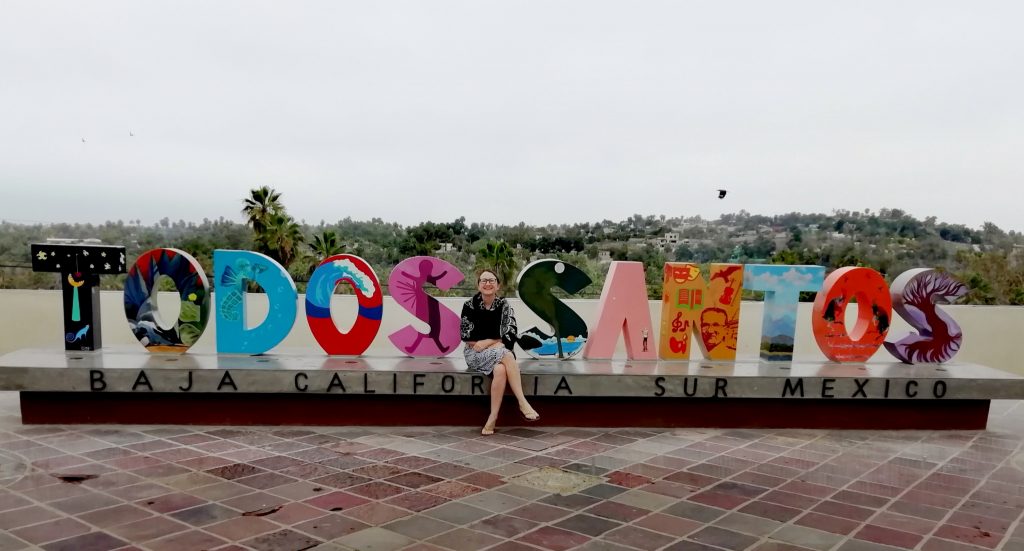
Wrapped-up… it was chilly! 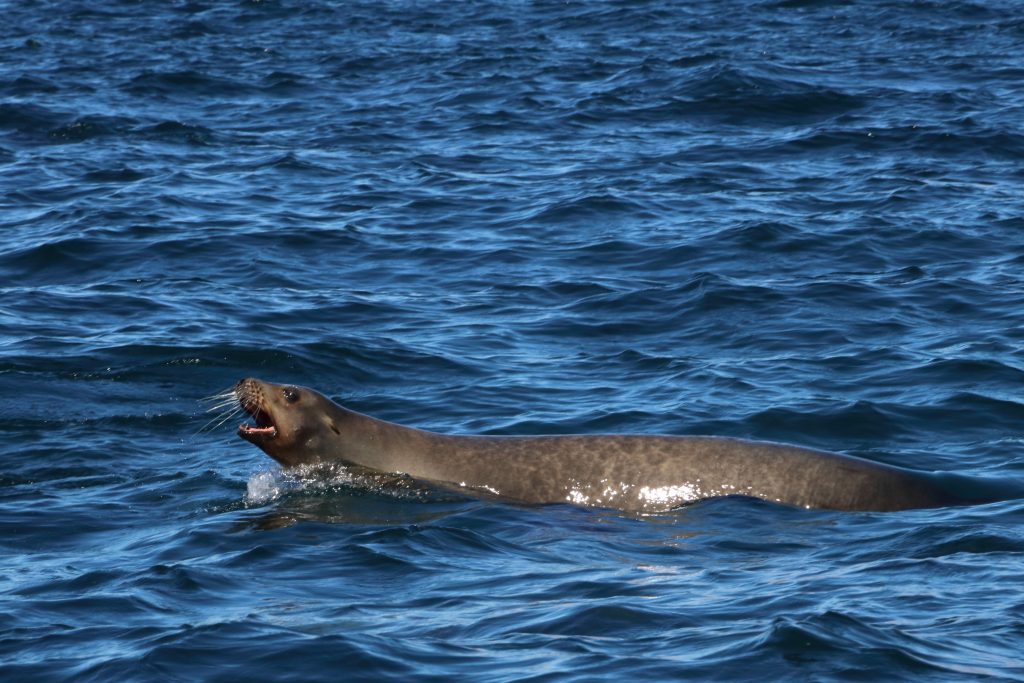
Swimming with seals 
Rock art 10,000 years old 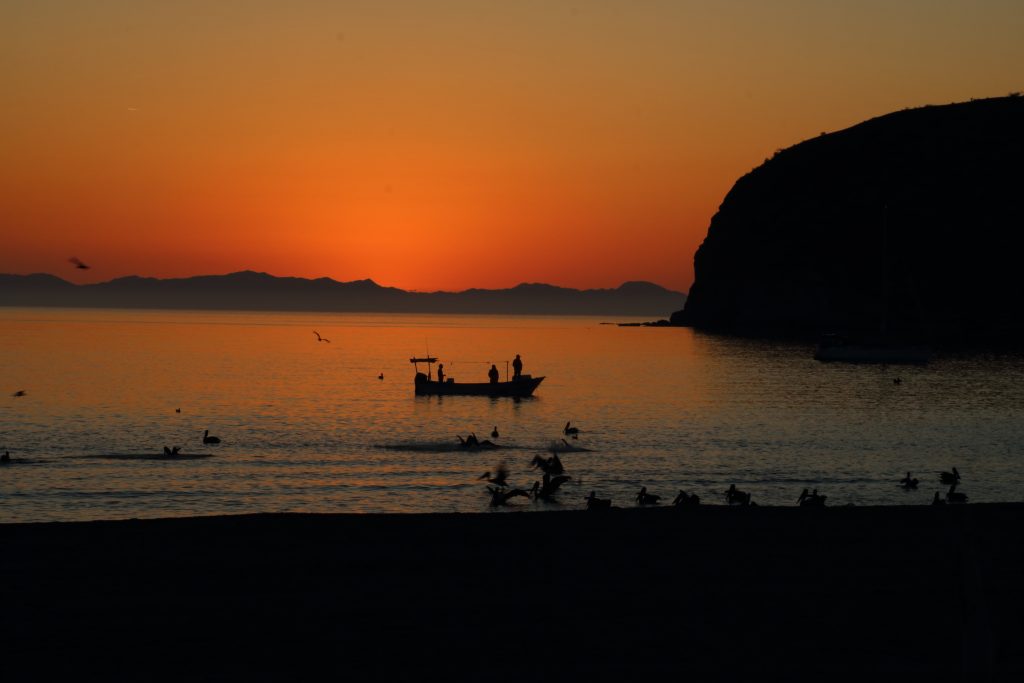
Baja California sunrise 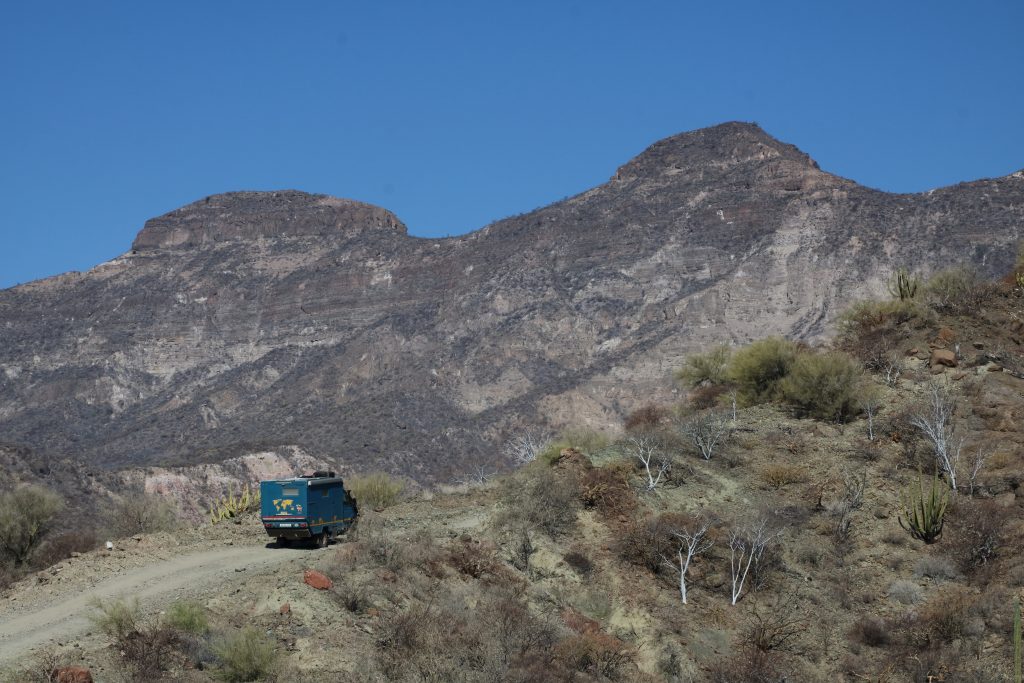
Baja California 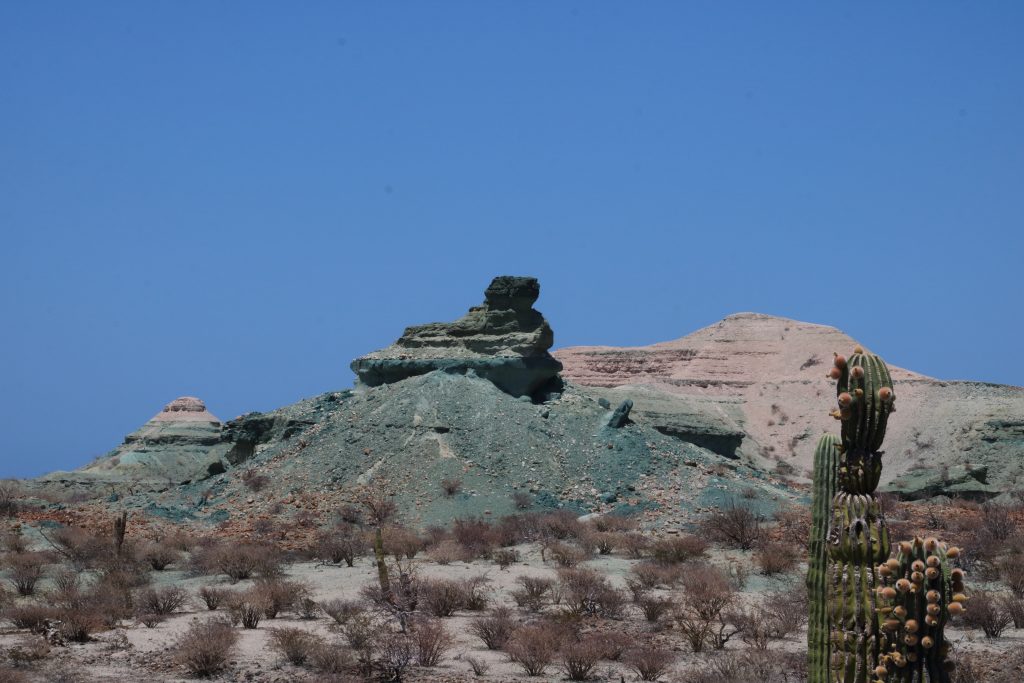
Baja California 
Baja California – not all about beaches! 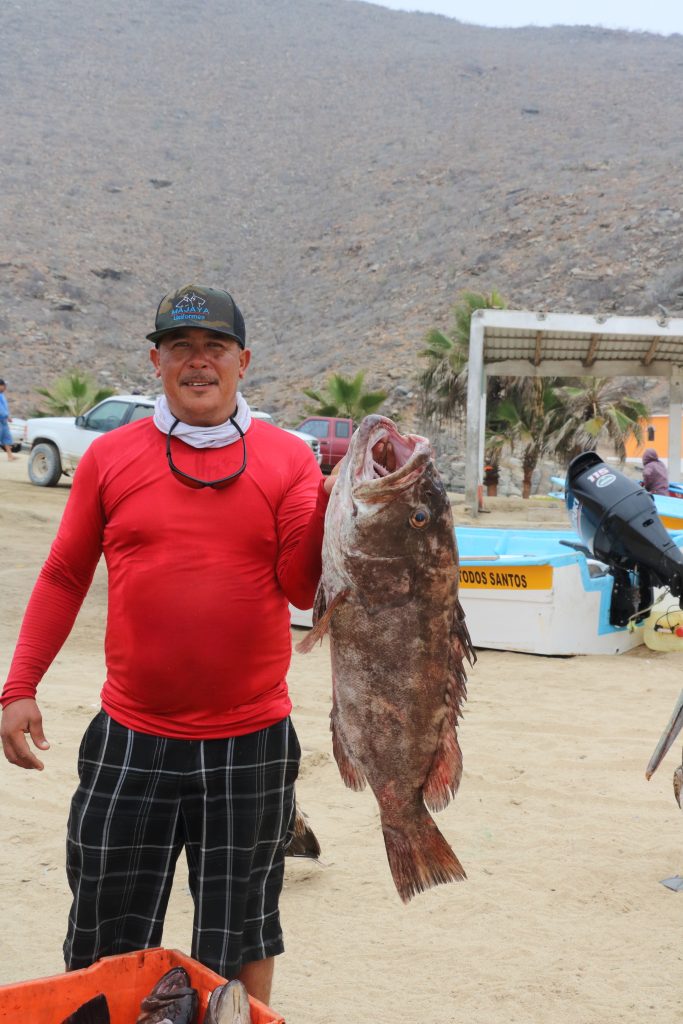
Proudly showing off his catch 
Long shadows 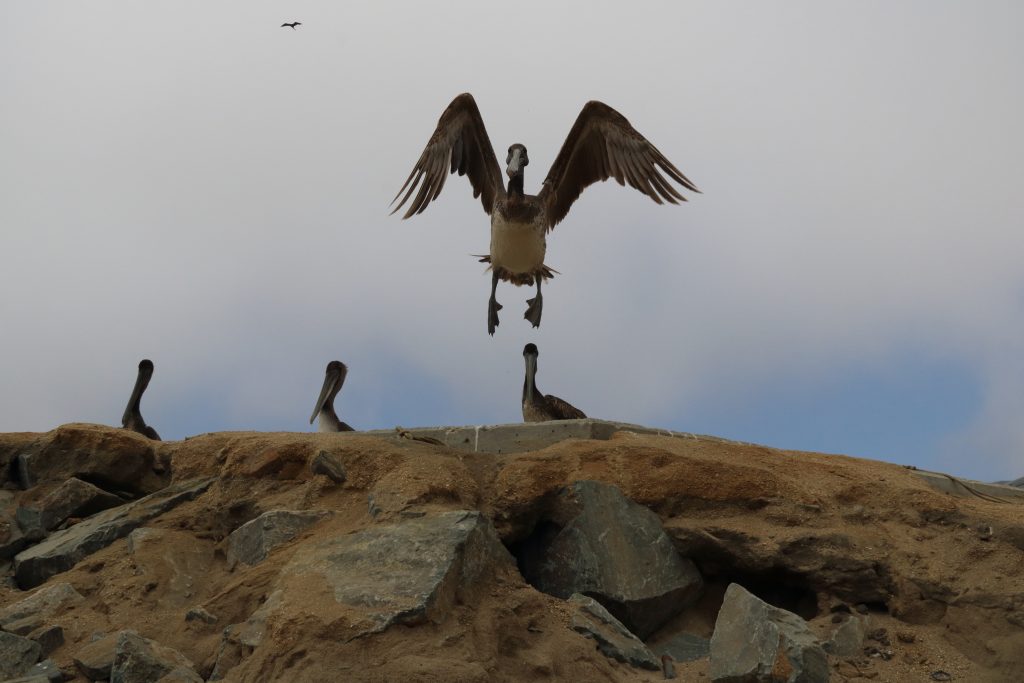
Pelicans – new favourite bird! 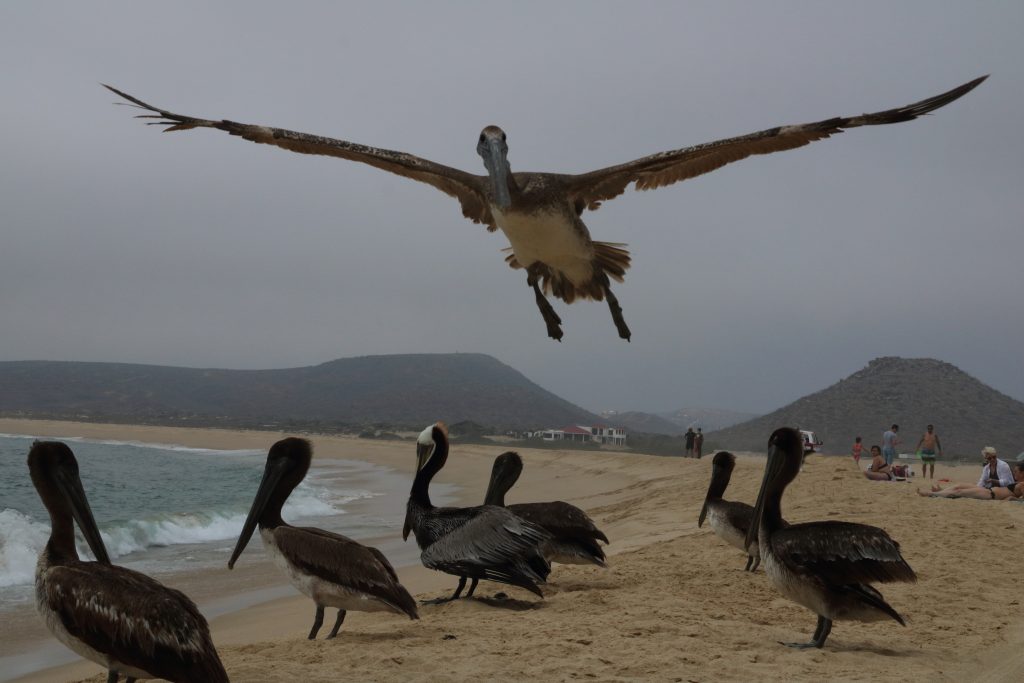
Pelican – new favourite bird 
baja california kayaking 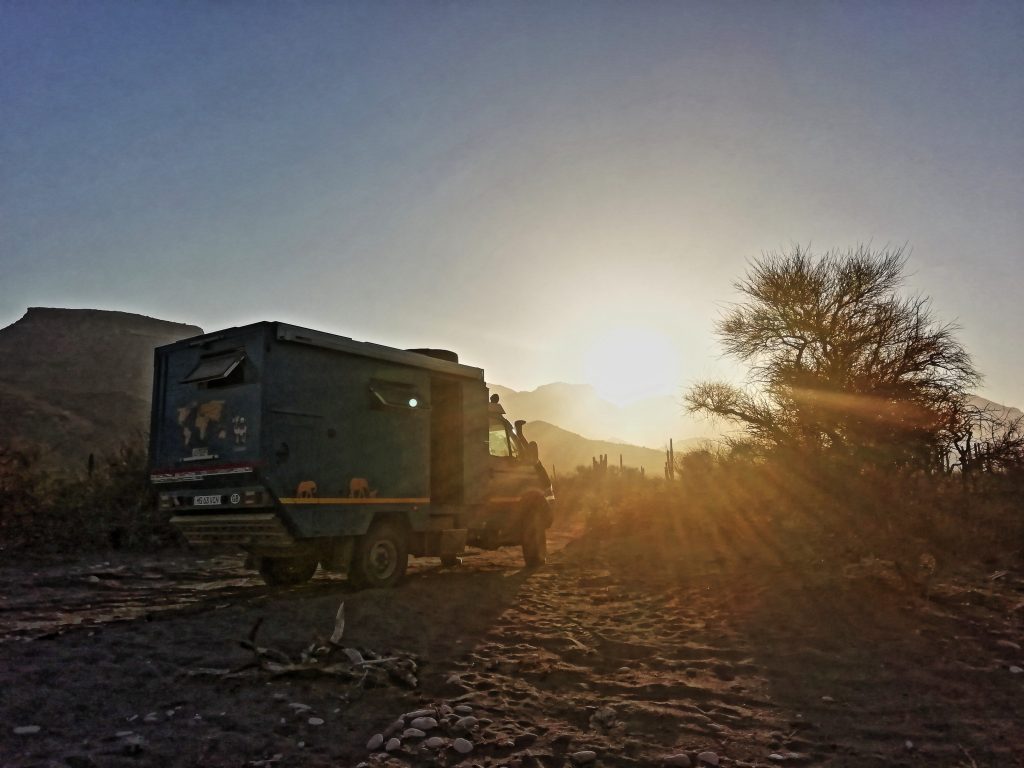
Wild camp
